When the problem occurs with the computer operating system in general, one of the first solutions to think about is to use Recovery Mode (Safe Mode). With Ubuntu is no exception.
Just like Windows, Ubuntu’s Recovery Mode allows you to perform a number of important recovery tasks, including booting into the root terminal to gain full access to the operating system, contributing to a complete recovery. problem is being encountered.
This article will show you how to access Recovery Mode (Safe Mode) in Ubuntu. (Applies to Ubuntu, Mint, and other Ubuntu-related distributions).
Boot into Recovery Mode in Ubuntu
When you are booting your Ubuntu computer, wait for the manufacturer logo to flash from the BIOS. If your computer boots up too quickly, you need to do this right after powering on. Short press the . key Shift or key Escape. On newer computers it is usually Escape. If you miss it, restart your computer and try again.
You now have access to the Ubuntu GRUB boot menu. Just below the normal boot option you will see an entry that says “Advanced Options“. Select it and press Enter.
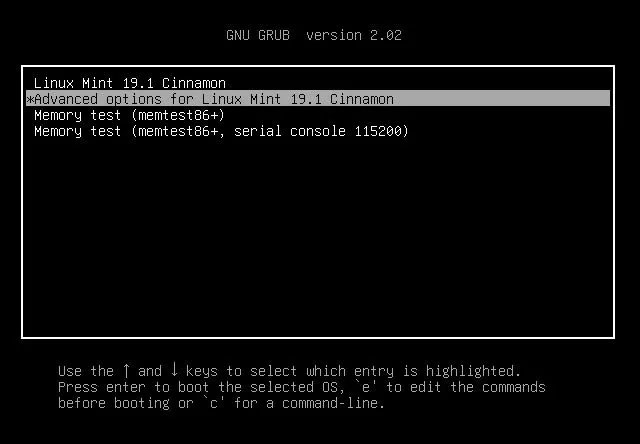
GRUB will take you to a new menu. At the bottom you’ll see one of the entries that says “Recovery” listed in parentheses.
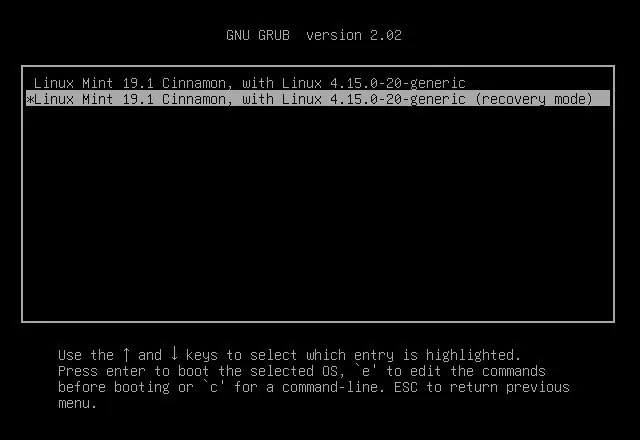
You will be taken to a simple screen with a blue background and a dialog box containing system recovery options. This is Ubuntu’s main Recovery menu; it allows you to perform many of the tasks necessary to repair a system that is experiencing software problems.
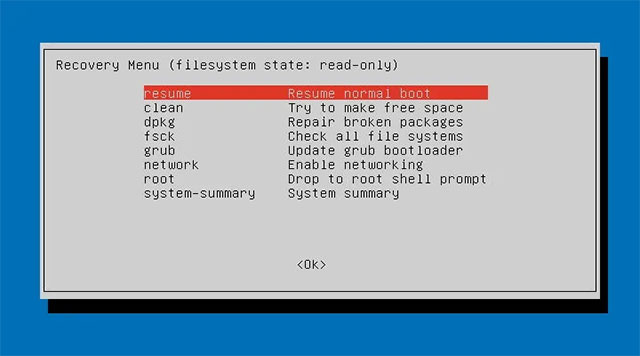
Learn recovery options
You now have seven options to help restore your Ubuntu system. Depending on the problem you are facing, there will be a suitable solution that you can choose from. As follows:
- Resume: If you somehow accidentally access this menu without needing it, just tap “Resume” to resume normal booting.
- Clean: If you have storage space problem, this option helps you to free up memory space. This will help you avoid a bunch of system glitches related to storage space.
- Dpkg: If you are installing a new package and something goes wrong, this may cause Ubuntu to not work properly. Using “dpkg” will help you to repair the installed packages with problems.
- Fsck: While not always working, “fsck” is very useful in troubleshooting hard drive related problems. You can also use this option to configure the graphics driver. If you suspect your hard drive is failing or experiencing errors, try using this tool.
- Grub: This option is used only to automatically update the installed Grub bootloader.
- Network: If you’re having network issues, use this option to set everything up again.
- Root: This is advanced troubleshooting. As you may have noticed, the Recovery Menu opens the system in a read-only state. This root tool gives you more write permissions.
- System-summary: View a basic overview of your system.
Root Terminal
When it comes to operating system problems, there are many problems that can only be solved by rooting, and they require more manual intervention than what the default options in the recovery menu offer. In this case, select “Drop to root shell prompt” to boot into the root terminal.
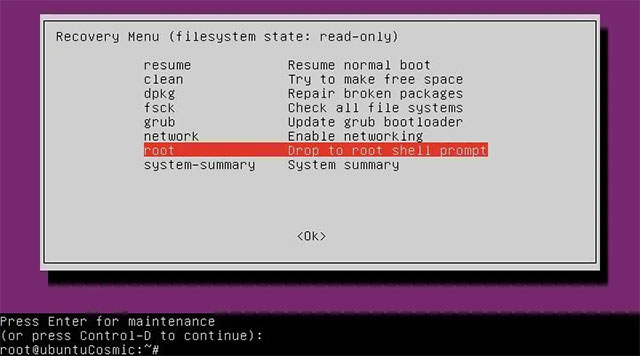
Immediately, you will see the bottom of the screen switch to a terminal window. But first, you’ll need to remount the drive’s root partition. It’s mounted read-only by default for safety purposes, but you’ll probably need to tweak it a bit to troubleshoot what’s going on. To reset with write permissions, run the following command.
mount -o remount,rw /If there are additional partitions to deal with, you will need to remount them as well. This can happen when your “/home” directory is on a separate partition. You can reassign them all at once with just the command:
mount -a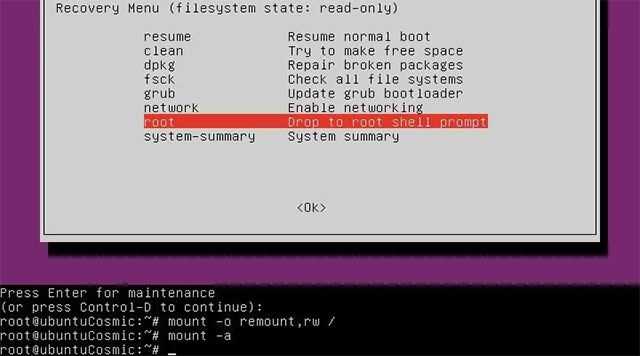
You should now have access to everything on your system as root, so be careful not to mess anything up in the process. Making backups, even just copies of the files you modify, is also a great idea.
After you have detected and fixed the problem, reboot your system and use as usual.
Source link: How to access Recovery Mode (Safe Mode) in Ubuntu
– https://techtipsnreview.com/






